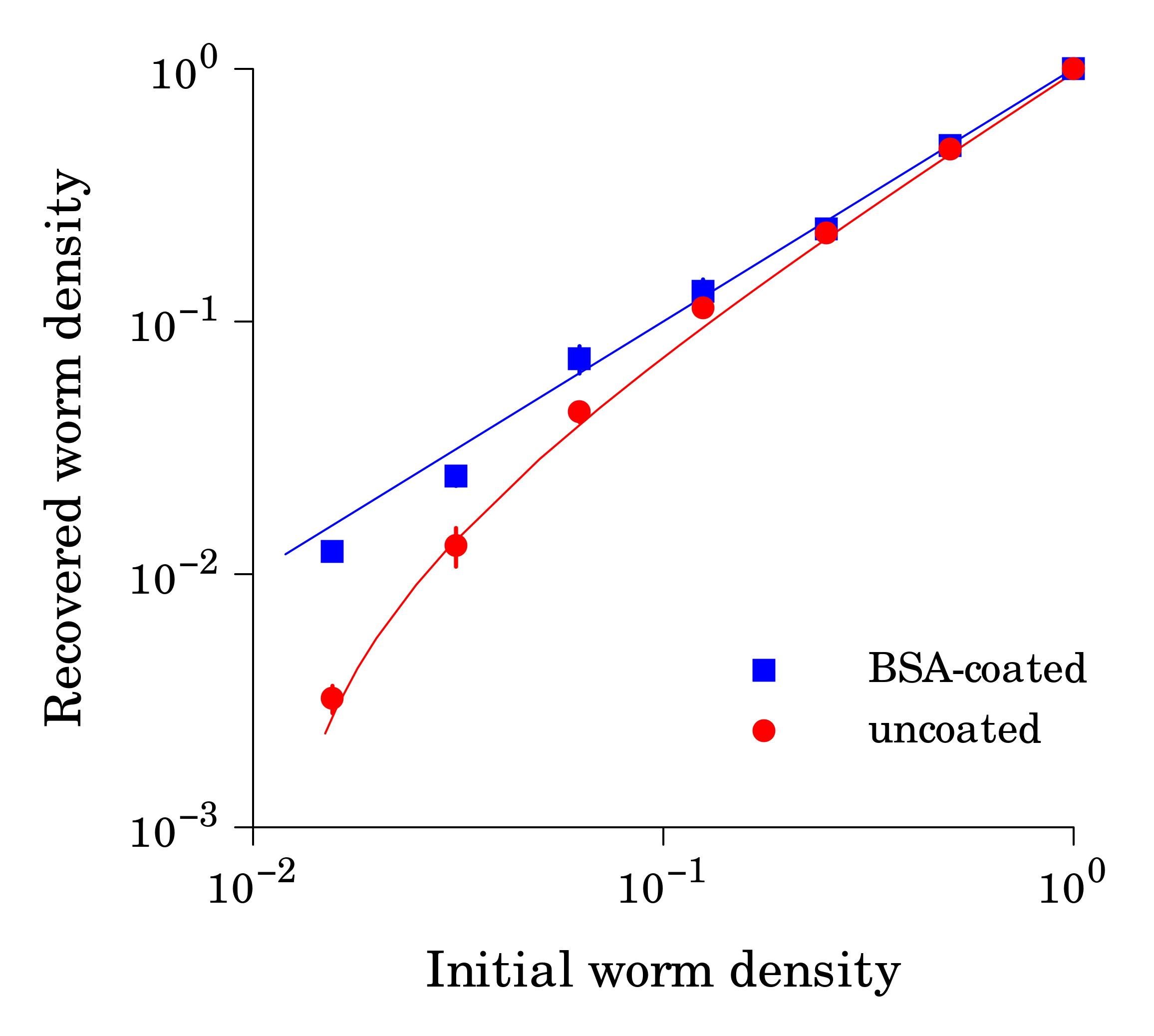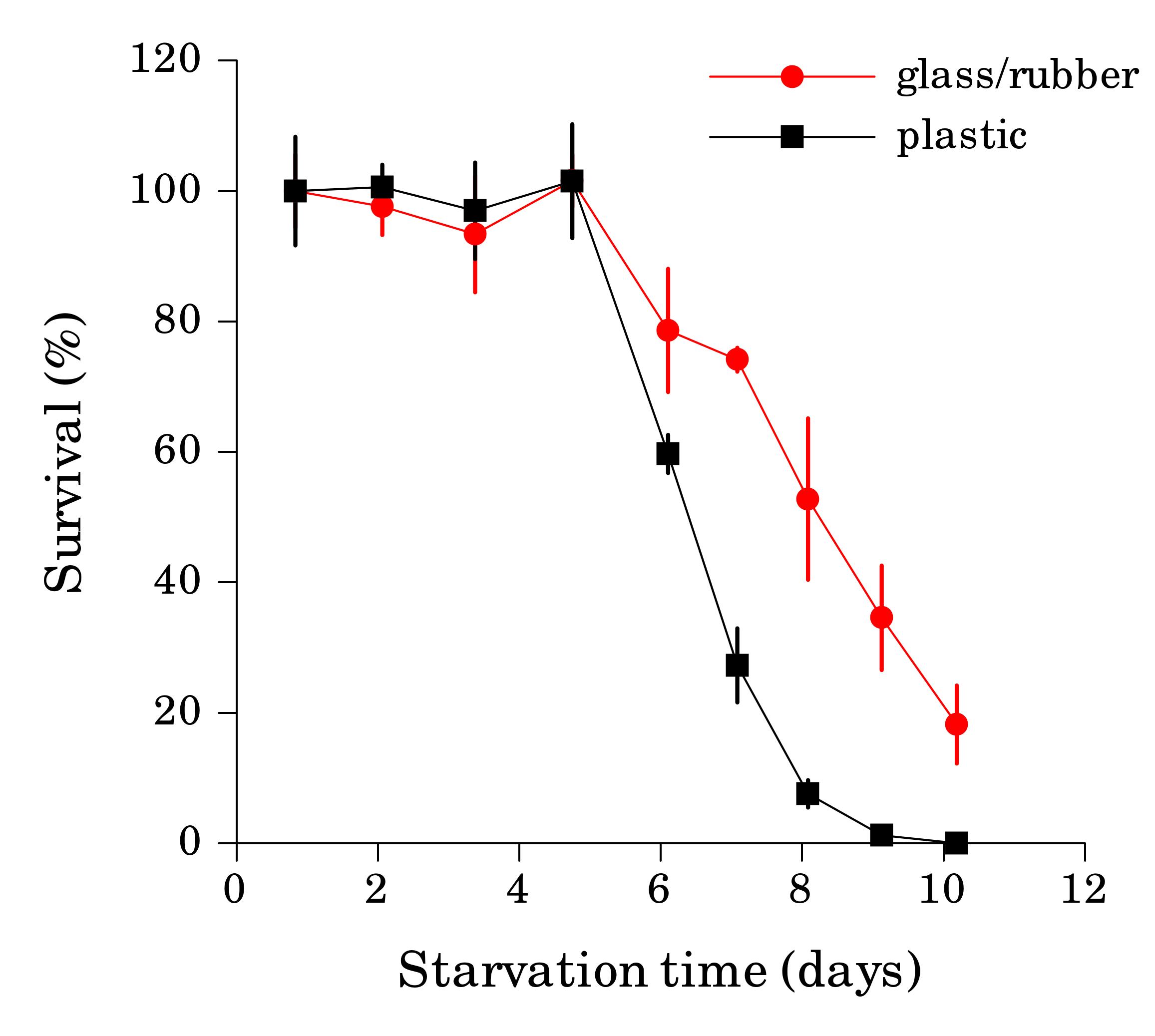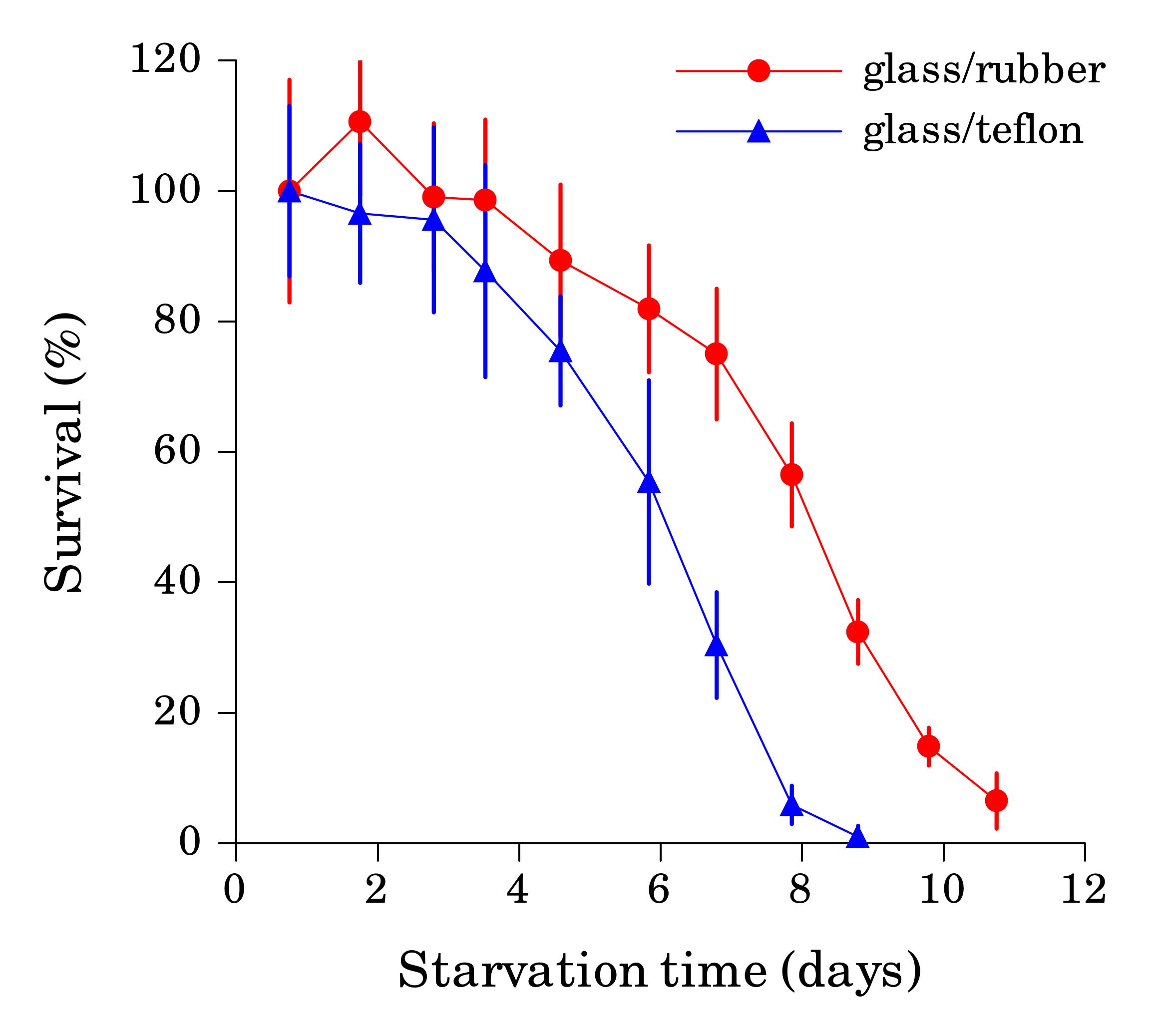Survival of L1 arrested larvae in the absence of food is a common experiment in C elegans lifespan studies. A typical protocol involves resuspension of freshly bleached worm eggs in sterile inorganic buffer. Newly hatched worms arrest due to lack of food and their starvation survival in the following days is monitored by taking aliquots and counting live worms. It is tempting to think that such well defined and simple experimental conditions leave little room for variability. In reality, the outcome of this experiment is sensitive to a number of often neglected factors ranging from worm maintenance history dating several generations back to small temperature fluctuations during starvation. Recently, we found additional sources of artifacts in L1 survival assays.
When starved L1 larvae are incubated in M9 buffer in plastic tubes (e.g. polypropylene 15-ml tubes), worms tend to adhere to hydrophobic plastic walls, which decreases apparent worm counts in suspension. This effect becomes particularly noticeable at low worm densities (< 3 worms/μl, Fig. 1) We found that precoating tubes with bovine serum albumin (1% aqueous solution for an hour followed by 3 water rinses) renders plastic hydrophilic and greatly reduces the sticking problem. BSA solution and water for rinses should be sterile.
When the starvation experiment is performed in glass tubes or vials, worm sticking is not a problem, since clean glass is hydrophilic. The danger in this case comes from the cap, since seemingly inert material lining the cap can significantly affect survival rate if it comes in contact with liquid. We found that L1 worms starved in glass tubes with rubber-lined caps reproducibly survived starvation longer then worms in plastic tubes of the same volume (Fig. 2) or glass tubes with teflon-lined caps (Fig. 3). We detected several compounds in water from tubes with rubber-lined caps and identified one of them as 2-mercaptobenzothiazole (2-MBT), which was present at ca. 0.5 μM. 2-MBT, used as an accelerator in the vulcanization of rubber, is commonly seen in rubber leachates (Reepmeyer and Juhl, 1983). We speculate that longer survival is due to a hormetic effect of one or several chemicals leaching from rubber, which would be toxic at higher concentrations. However, low concentrations of synthetic 2-MBT alone were not sufficient to reproducibly extend L1 starvation survival (at 3 μM and above 2-MBT is toxic to worms). Other components of the rubber leachate may be necessary for the effect.
These results demonstrate artifacts that can both decrease and increase apparent survival rates in L1 starvation.
Figures

Articles submitted to the Worm Breeder's Gazette should not be cited in bibliographies. Material contained here should be treated as personal communication and cited as such only with the consent of the author.


Leave a Reply
You must be logged in to post a comment.